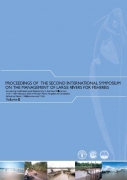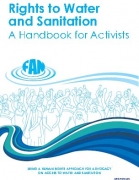Courses, Toolkits, Manuals, Guides and Handbooks
Sowing seeds of consciousness - Presentations from the South Asia Conference on "Outstanding Organic Agriculture Techniques", Bangalore organised by OFAI (2009)
Posted on 20 Mar, 2011 06:14 PM This set of presentations from the conference on Outstanding Organic Agriculture Techniques held during September 2009 at Bangalore deals with the conservation of seeds particularly for small subsistence farmers who are not very well linked with local markets and for whom seed production is still an integral part of farming activity seamlessly merged with the growing of crops and the totality of work and life on a farm.
This set of presentations from the conference on Outstanding Organic Agriculture Techniques held during September 2009 at Bangalore deals with the conservation of seeds particularly for small subsistence farmers who are not very well linked with local markets and for whom seed production is still an integral part of farming activity seamlessly merged with the growing of crops and the totality of work and life on a farm.
Social impact assessment of resettlement & rehabilitation policies and packages in India - Report of a research project by Centre for Social Development
Posted on 02 Mar, 2011 08:37 AMThe National Resettlement and Rehabilitation (R&R) policy, issued in 2007, recognizes the need to carry out Social Impact Assessment (SIA) as part of the resettlement planning and implementation processes. While an assessment of social impacts prior to the commencement of a new project or expansion of an existing is now obligatory under this new policy, the appropriate guidelines for the purpose do not yet exist. This handbook on conducting social impact assessments aims to fill this gap.
Co-processing of distillery spent wash concentrate in cement industry – Inviting comments on the draft guidelines by the Central Pollution Control Board (2010)
Posted on 01 Mar, 2011 09:48 PMIn order to utilize the hazardous wastes generated in the cement industry the Central Pollution Control Board has come up with the draft guidelines (in February 2010) dealing with the co-processing of distillery spent wash concentrate in the cement industry.
Introduction to Integrated Water Resource Management (IWRM) - Open courseware from the United Nations University (UNU)
Posted on 19 Feb, 2011 11:13 PM This introductory course on Integrated Water Resource Management (IWRM), from the United Nations University (UNU), provides a brief historical background and overview of IWRM and gives an overview of the various aspects of IWRM, from integration, capacity building to applications and case studies.
This introductory course on Integrated Water Resource Management (IWRM), from the United Nations University (UNU), provides a brief historical background and overview of IWRM and gives an overview of the various aspects of IWRM, from integration, capacity building to applications and case studies.
IWRM has been defined by the Global Water Partnership (2000) as a process, which promotes the coordinated development and management of water, land and related resources in order to maximize the resultant economic and social welfare in an equitable manner without compromising the sustainability of vital ecosystems. An important aspect of any IWRM program is therefore, research, planning and action at the river basin level.
Watershed prioritisation atlas for Maharashtra
Posted on 09 Feb, 2011 07:34 AMThis document by the Maharashtra Remote Sensing Applications Centre (MRSAC) presents the “Atlas on Watershed Prioritisation” using resources database on 1:2,50,000 scale adopting a
Proceedings of the second international symposium on the management of large rivers for fisheries by FAO and Mekong River Commission
Posted on 03 Feb, 2011 07:55 PM The second international symposium on the management of large rivers for fisheries was held by the Food and Agriculture Organisation of the United Nations (FAO) and Mekong River Commission on 11 - 14 February 2003 in Phnom Penh, Kingdom of Cambodia. It had three primary objectives: (a) To provide a forum to review and synthesise the latest information on large rivers; (b) To raise the political, public and scientific awareness of the importance of river systems, the living aquatic resources they support and the people that depend on them; and (c) To contribute to better management, conservation and restoration of the living aquatic resources of large rivers.
The second international symposium on the management of large rivers for fisheries was held by the Food and Agriculture Organisation of the United Nations (FAO) and Mekong River Commission on 11 - 14 February 2003 in Phnom Penh, Kingdom of Cambodia. It had three primary objectives: (a) To provide a forum to review and synthesise the latest information on large rivers; (b) To raise the political, public and scientific awareness of the importance of river systems, the living aquatic resources they support and the people that depend on them; and (c) To contribute to better management, conservation and restoration of the living aquatic resources of large rivers.
The symposium was organised in six sessions:
Session 1: Status of rivers
Session 2: Value of river fisheries
Session 3: Fisheries ecology and conservation
Session 4: Management of river fisheries
Session 5: Statistics and information
Session 6: Synthesis
It came up with the following recommendations for action -
- Improve the valuation of living river resources in order to contribute to equitable and sustainable management of fishery resources and properly place the fishery in the context of the other uses of rivers.
- Direct greater effort to better understanding the social and economic aspects of fisheries to support policy and management priorities; livelihood approaches will be a valuable tool.
- Communicate and engage with environment and water resources managers within the context of multi-use of water in order to accurately assess impacts and to sustain the benefits of river fisheries in an equitable manner.
- Develop processes that facilitate the users and beneficiaries of the fishery resource to assume greater control of its management.
- Establish appropriate mechanisms at national and basin level to enable negotiation for the needs of communities dependent upon the living aquatic resources. In particular further regulations need to be elaborated to protect general ecosystem function and provide for environmental flows.
- Use instruments such as the freshwater eco-regions approach, the Ramsar Convention and the guidelines for water allocation suggested by the World Commission on Dams, to enhance planning for conservation and sustainable use of river habitats.
- Incorporate ecological flow requirements of river-floodplain systems into development plans and impact assessments that affect river flows, taking into account the seasonality of the system and the environmental cues needed by the fish for migration and reproduction.
- Rehabilitate degraded ecosystems wherever possible. Prioritize schemes that ensure connectivity and protection of critical habitats.
Right to water and sanitation - A handbook for activists by Freshwater Action Network (FAN) Global
Posted on 31 Jan, 2011 10:11 PM With tihs, they can improve water and sanitation service regulation and provision at international, national and local levels. Directed primarily at community groups, human rights NGOs, rights-based development practitioners and aid workers, this handbook aims to strengthen human rights-based advocacy by providing innovative and practical suggestions that activists and organisations can use in their work. It also acts as a resource guide for finding further information.
With tihs, they can improve water and sanitation service regulation and provision at international, national and local levels. Directed primarily at community groups, human rights NGOs, rights-based development practitioners and aid workers, this handbook aims to strengthen human rights-based advocacy by providing innovative and practical suggestions that activists and organisations can use in their work. It also acts as a resource guide for finding further information.
Water and sanitation are essential for living a healthy life with dignity. However, around a billion people across the world lack access to a safe and sufficient water supply to cover their basic needs. Over 2.5 billion people lack access to adequate sanitation and nearly 1.2 billion face the indignity of open defecation every day.
The Millennium Development Goal (MDG) target to halve the proportion of people without sustainable access to safe drinking water and basic sanitation by 2015 is seriously off track, with sanitation severely lagging behind. For example, estimates suggest that at current rates of progress, sub-Saharan Africa will miss the MDG water target by about 25 years, while the sanitation target may not be reached until well into the 22nd century.
Institutional framework for regulating use of groundwater in India – A report by IRMED for MoWR
Posted on 23 Jan, 2011 08:37 PM
The basic objectives of this study were -
Performance audit of Accelerated Irrigation Benefit Programme (AIBP) by CAG (2010)
Posted on 23 Jan, 2011 07:29 PMThe audit was conducted as a follow up audit of the earlier report on AIBP (No 15 of 2004) to assess whether the performance of AIBP had improved, and also whether the key issues highlighted in the earlier report had been appropriately addressed.
Geo-hydrological studies for augmentation of spring discharge in the Western Himalaya – Final technical report by the MOWR
Posted on 23 Jan, 2011 04:39 PMIt is an attempt to understand the effect of rainfall, physiography, lithology, slope and aspect, land use practices, vegetation, altitude, soil type and anthropogenic interference (e.g., road construction and settlement etc.) and other characteristics in the spring recharge zone on the water yield and water quality of the selected springs in the mid-altitudinal belt (lesser Himalaya) in western Himalaya (Uttaranchal).